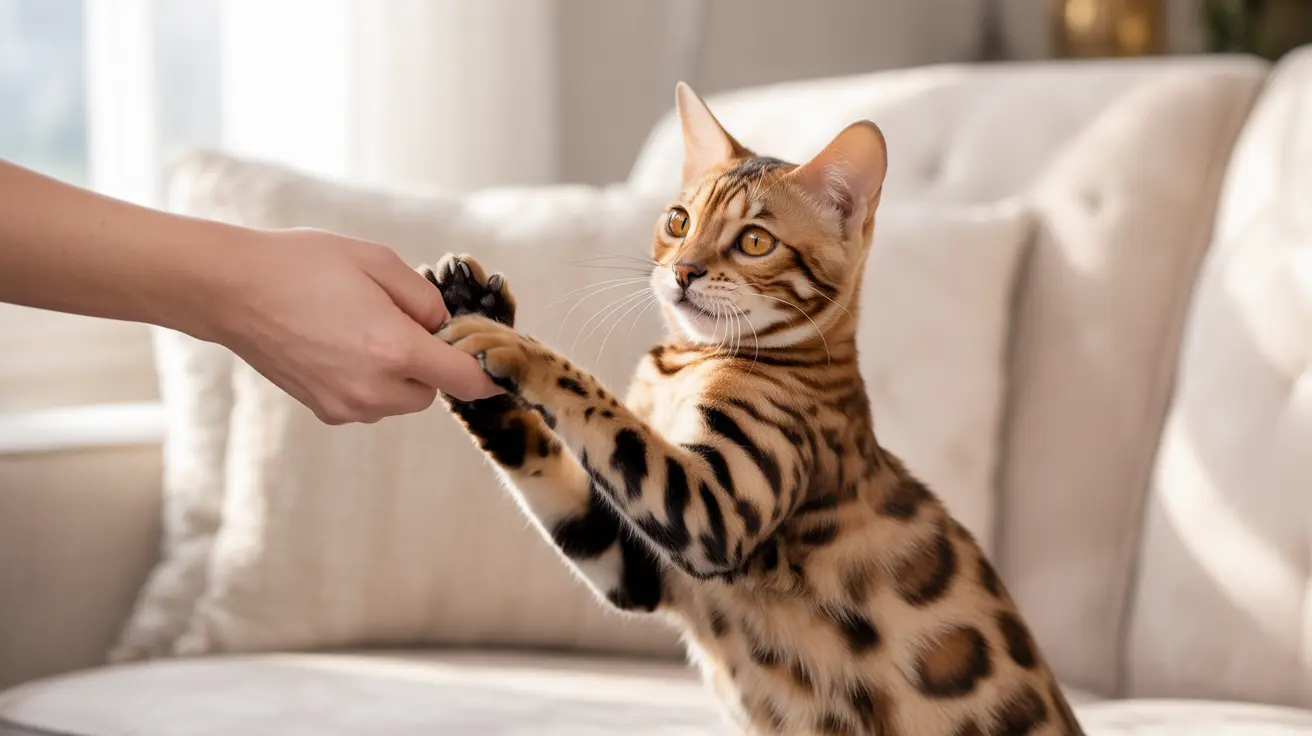The Science Behind Cat Biting Behavior
Cats use their mouths to explore their world and communicate with both humans and other cats. This behavior stems from their early kittenhood experiences, where they learn social boundaries through play with littermates and their mother. When your cat gently bites your hand, they're often drawing from these instinctual behaviors.
Love Bites vs. Warning Bites
Not all cat bites are created equal. Love bites are typically gentle, don't break the skin, and are often accompanied by purring or rubbing. Warning bites, on the other hand, may start gentle but can escalate if the warning isn't heeded. Learning to distinguish between these types of bites is crucial for maintaining a healthy relationship with your cat.
Common Reasons for Hand-Grabbing and Biting
Affection and Bonding
Many cats use gentle biting as a way to show affection, similar to how they groom their feline companions. These "love bites" are usually combined with purring, kneading, or gentle head-butting, indicating a positive emotional state.
Overstimulation During Petting
Cats can become overwhelmed by continuous petting, leading to what behaviorists call "petting-induced aggression." When this happens, your cat may suddenly grab and bite your hand as a way to say "enough."
Play and Hunting Instincts
Young cats especially may grab and bite hands as part of their natural play behavior. This action mimics how they would catch and subdue prey in the wild, even though they're well-fed house cats.
Reading Your Cat's Body Language
Understanding your cat's body language can help prevent unwanted biting incidents. Watch for these warning signs:
- Tail twitching or lashing
- Skin rippling along the back
- Ears flattening or rotating backward
- Dilated pupils
- Tense body posture
How to Respond to Gentle Biting
When your cat grabs and bites your hand, follow these expert-recommended steps:
- Remain calm and avoid pulling away suddenly
- Gradually withdraw your hand when safe to do so
- Redirect their attention to appropriate toys
- Give them space if they appear overstimulated
- Never punish them for this behavior
Frequently Asked Questions
Why does my cat gently grab and bite my hand during petting?
This behavior usually indicates either affection or overstimulation. Your cat might be showing love through "grooming" behavior, or signaling that they've had enough petting and need a break.
How can I tell if my cat's gentle bite is a sign of affection or overstimulation?
Look at their overall body language. Relaxed posture and purring suggest affection, while tail twitching, skin rippling, or flattened ears indicate overstimulation.
What body language should I look for to prevent my cat from biting me while playing?
Watch for signs like tail twitching, dilated pupils, or ears moving backward. These signals often precede biting and indicate your cat is becoming too stimulated.
Why does my cat nip at my hand to get my attention, and how can I stop it?
Cats learn that nipping gets attention. To discourage this, ignore the behavior and reward calm interactions. Provide regular play sessions to prevent attention-seeking bites.
Could gentle biting from my cat indicate pain or a medical problem?
Yes, sudden changes in biting behavior or aggressive bites could signal pain or illness. If your cat's biting behavior changes significantly, consult your veterinarian.
Conclusion
Understanding why your cat grabs and bites your hand is key to maintaining a positive relationship with your pet. By learning to read their body language and responding appropriately, you can better communicate with your feline friend and prevent unwanted biting behaviors. Remember that most gentle biting is normal cat behavior and can be managed through patient training and consistent responses.






